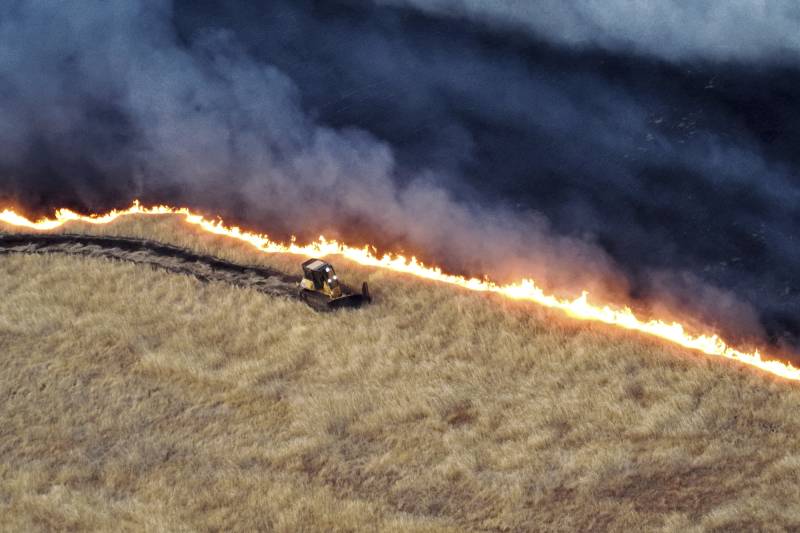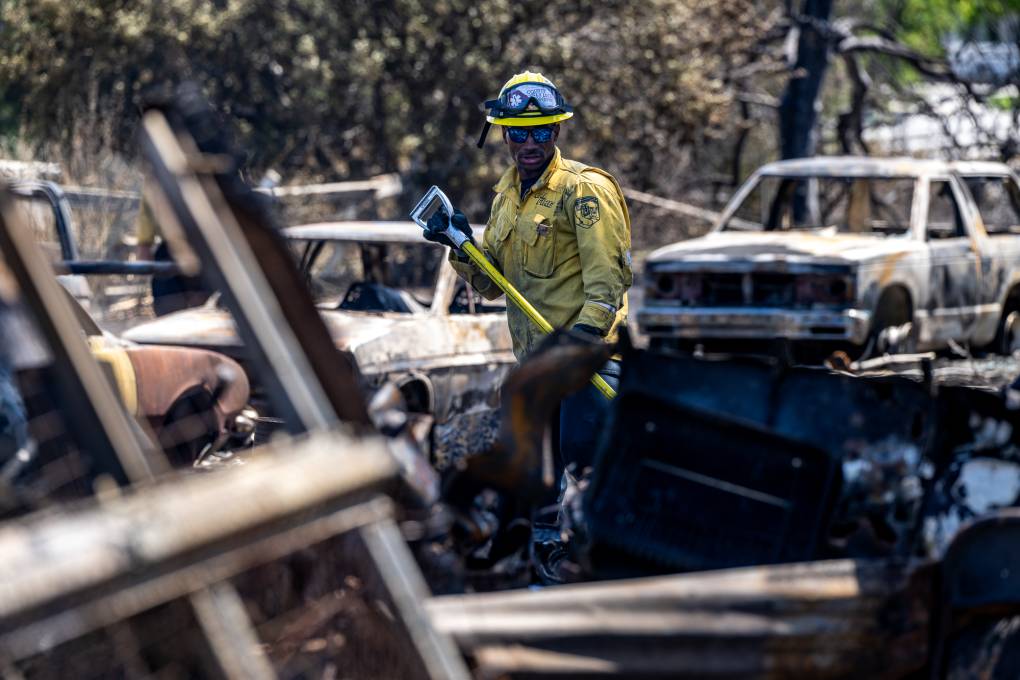Grass fires, Clements said, start more easily and burn more quickly than other types of fires. They can be intensely hazardous even though they are generally not associated with as much destruction as forest fires or wildland-urban interface conflagrations.
“Grass fires are actually quite dangerous for firefighters because they can spread so quickly,” Clements said. “And if the wind shift changes erratically through turbulence and such, the fire spread can change on the firefighters quickly as well. So, there are cases of firefighter fatalities on grass fires. It’s not common, but it does occur.”
Two firefighters were injured in responding to the Corral Fire, both of which are expected to recover, according to news reports.
“And because of the rate the spread [of grass fires] is so high,” Clements said, “they are quite dangerous in terms of igniting homes.”
They do have embers that “spot,” the term fire officials use for burning material thrown by the wind to an unburned area, starting a new fire. But those spots don’t travel as far as spots from a fast-burning forest fire.
“It’s usually not as easy for grass fires to ignite homes, but they do all the time,” Clements said. “What happens is that fire can actually get into landscaping materials or vegetation around the home, and then that can ignite the house.”
The Corral Fire burned four structures. On Sunday, another fire broke out in a residential area in the San Jose foothills. It burned three homes and was spread, in part, by strong wind.
The days ahead
The heat wave forecast for this week will accelerate the drying of fuels, increasing fire risk. However, meteorologists are not expecting the same breezy conditions we had over the weekend.
“The lack of wind will be better for firefighters if fires are started,” Clements said.
Roger Gass, weather forecaster at the National Weather Service in Monterey, said, “There may be some gusts up to about 20 miles per hour in the interior, but we are not going to see any offshore flow.”
Offshore flow occurs when air moves from land to sea. It’s usually associated with very dry weather, which can lead to higher fire danger.
“Risk for fire is pretty low on the large scale. If we had offshore flow, it would increase,” Gass said.
It wouldn’t be surprising if some fires break out during the heat wave, Gass said. However, the weather service does not expect extreme red flag conditions.
In fact, overall, fire scientists are forecasting a normal to less-active-than-normal fire season this summer, thanks to all the water we got over the winter. What fall will look like, when the Bay Area typically has its most destructive fires, is still an open question. Much will depend upon this summer’s weather.


